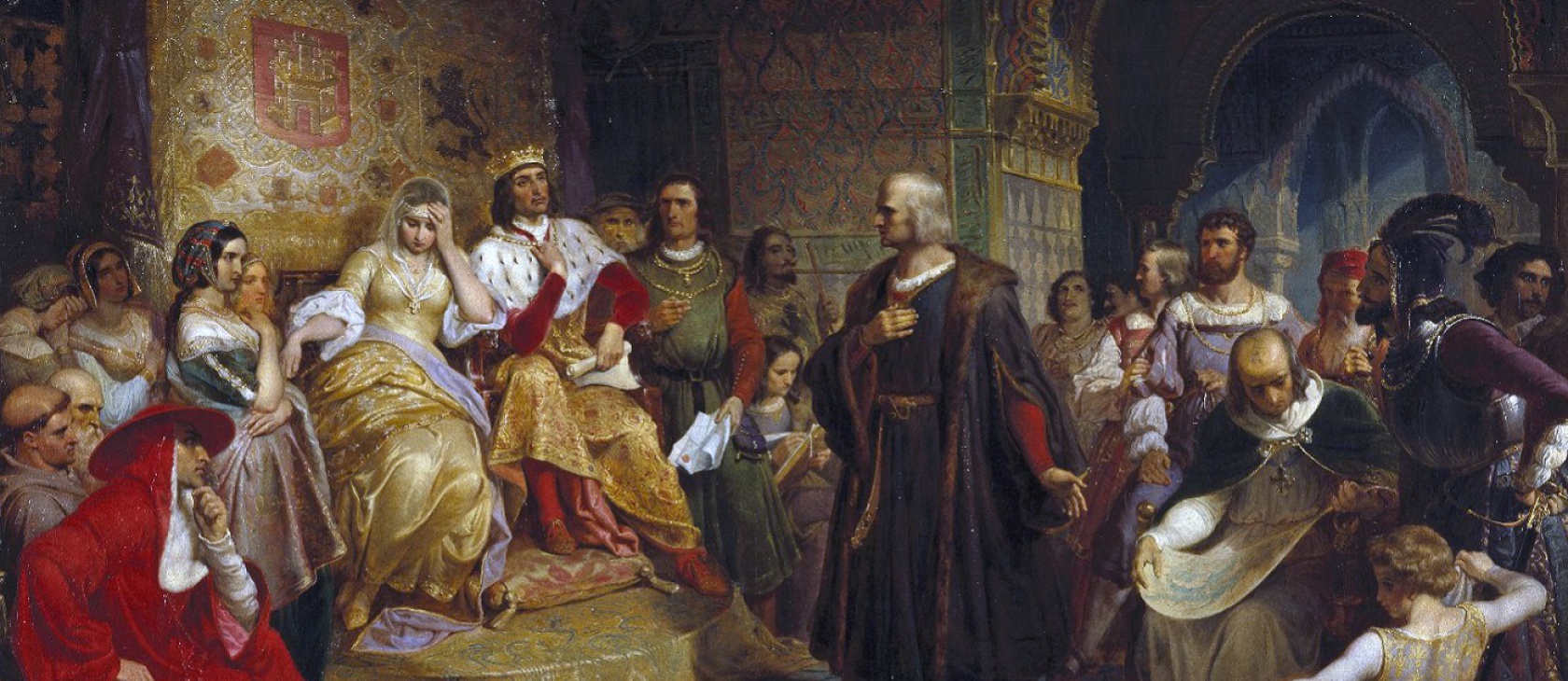On October 12, 1492, the settling of America was set in motion when the navigator and explorer Christopher Columbus arrived, rather unexpectedly, at San Salvador (which was later renamed Watling Island, before its original name was restored in 1926). Six months earlier, he and the Catholic monarchs of Spain, Ferdinand II and Isabella I, had signed the “Capitulations of Santa Fe,” a set of documents based on an expedition to look a route to Asia through the Atlantic Ocean. Then he sailed from the port of Palos de la Frontera in the province of Huelva, leading three ships (La Pinta, La Niña, and La Santa María) on August 3, 1492. After receiving lavish recognition in Europe, three additional trips to the New World followed. He explored the northern Atlantic coast of South America and spurred talk of a vast “New World” between Europe and Asia.
This adventure profoundly changed civilization on both sides of the Atlantic, bringing negative changes (which have been richly chronicled) and benefits (which lie mostly forgotten). For some natives, these conquests were seen as a liberation from indigenous rulers’ oppression.
In my native Spain, Columbus' deeds are celebrated on October 12; in the United States, the date of "Columbus Day" varies. But every year brings controversy over his legacy and a re-examination of his expedition.
One of the major ways Columbus’ expedition changed South America, apart from the creation of new cities and universities, is the expansion of Christianity. Catholic kings sent missionaries and ordered the building of cathedrals and monasteries. That process of evangelization ended the barbaric practice of human sacrifice. Today, almost 90 percent of South America considers itself Christian – far higher than in Europe, which planted the seed of faith.
One of the most unappreciated blessings of Columbus’ journey was exposing the Americas to the School of Salamanca.
Christianity is responsible, not for the enslavement, but for the desire to treat natives with the respect and inherent dignity all human beings deserve. (Due in part to this understanding, the Spanish encouraged intermarriage with natives, unlike, for instance, in North America.) Queen Isabella was so incensed upon learning that Columbus brought slaves back to Spain that on June 20, 1500, she ordered their liberation. In her last will and testament, written just four years later, she instructed her successors: “Do not consent or permit that the Indians living in and inhabiting those said Indies and mainland be persecuted in their persons and in their properties; but instead I order that they be treated well and justly. And if they have received any distress, that it be remedied and corrected.” However, because of the encomienda system, slavery did not come to an end until the 1800s.
One of the most unappreciated blessings of Columbus’ journey was exposing the Americas to the School of Salamanca. These Catholic scholars championed human rights, as well as economic liberty.
Spain was the first European nation where a debate took place among intellectuals on the legitimacy of its national conquest, based on the notion of “just titles” (justos títulos). A key event was the famous Valladolid debate (1550-1551) between Bartolomé de las Casas and Juan Ginés de Sepúlveda. Bartolomé de las Casas argued that natives retained their dignity and rights, despite their often gruesome practices, such as human sacrifice. (Juan Ginés de Sepúlveda argued that the natives deserved far harsher treatment from the civilized Spaniards.) Aside from his arguments on behalf of natives’ rights and dignity, it is very important to highlight the role of other participants, such as Domingo de Soto opposed the Spanish domination of American natives, and Melchor Cano. Both were disciples of Francisco de Vitoria.
Vitoria was the founder of the School of Salamanca, which contributed to the development of classical liberal (or “libertarian”) theories promoting the “commercial spirit.” This school also warned about the negative effects of monetary debasement and inflation.
First, he stressed that persons are not born as slaves but as free individuals, and thus nobody is superior to another by nature.
Second, he recognized the right to own private property, the fruit of one’s labor, which he did not find incompatible with the moral duty to show generosity to one’s neighbor.
Third, he insisted in that no judge could impose the death penalty without a conviction, nor condemn an accused person who has made a confession after enduring physical torture. For him, human dignity demanded the presumption of innocence.
Fourth, every nation has the right to self-determination when adopting a political system.
Fifth, he defended the national sovereignty against absolute and despotic powers.
He analyzed in detail the sources and limits of civil and ecclesiastical power. In his work “De indis,” it’s stressed that native peoples have the same rights as all of humanity. This is an initiation point for “ius gentium” – the notion that all nations are ruled by natural law. Many cite his philosophy as the beginning of international law.
The debate of Valladolid had no clear resolution. However, it created additional popular and intellectual support for the “New Laws of the Indes,” instituted in 1542, which limited the worst excesses of the encomienda system.
The ideas of Francisco de Vitoria and the School of Salamanca would have given the indigenous peoples of the “New World” a greater measure of freedom than they enjoyed under Spain – and gave them greater liberty than they enjoyed under pre-Christian tribal leadership. The positive influence of their thought is worth celebrating.




